Free download: Top 10 Natural & Easy Remedies for Joint Pain from Home. Learn these helpful remedies.
Estimated Reading Time: 8 minutes read
Back muscle spasms can be a debilitating experience, causing significant discomfort and limiting mobility. Fortunately, specific exercises can effectively manage and alleviate these spasms. This article explores various stretching and strengthening exercises that are instrumental in dealing with back muscle spasms. Implementing these exercises into your routine can significantly aid in reducing discomfort and improving back health.
Table of Contents
Causes of Back Muscle Spasms
Understanding the causes of back muscle spasms is vital in preventing and managing them effectively. These spasms can be attributed to various factors contributing to the overall discomfort experienced.
- Poor Posture: Spending long hours in incorrect sitting or standing positions.
- Overuse: Engaging in repetitive movements or heavy lifting.
- Injury: Trauma to the back muscles or spinal injuries.
- Stress: High levels of physical or emotional stress lead to muscle tension.
- Dehydration and Electrolyte Imbalance: Insufficient hydration or imbalance in essential minerals.
- Underlying Medical Conditions: Conditions like arthritis or spinal stenosis.
Regularly addressing these factors through lifestyle changes and exercises can significantly help manage and prevent back spasms.
Symptoms of Back Muscle Spasms
Identifying the symptoms of back muscle spasms is crucial for early intervention and effective management. Common symptoms include:
- Sudden Back Pain: Intense pain that appears abruptly in the back muscles.
- Muscle Tightness: Feeling of tightness or hardness in the back muscles.
- Limited Mobility: Difficulty moving or bending due to muscle stiffness.
- Prolonged Discomfort: Persistent pain that lasts for extended periods.
- Pain When Moving: Increased pain during specific movements or activities.
Recognizing these symptoms early can lead to more effective management through targeted exercises and lifestyle adjustments.
Stretching for Back Muscle Spasms
Incorporating stretching exercises into your daily routine is crucial for managing back muscle spasms. Gentle stretches can help alleviate tension in the back muscles, increase flexibility, and provide relief from pain.
1. Knee to Chest
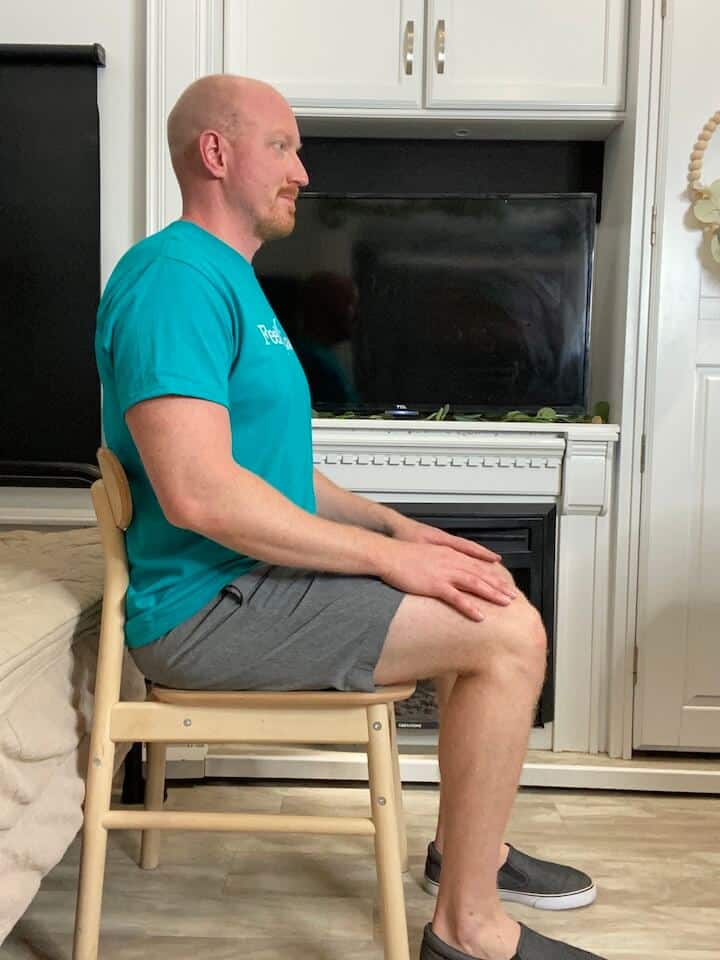

- Starting position: Laying on your back with your knees bent and feet flat on the bed. This is a nice, decompressed position for the spine to begin in.
- Reach the hands behind the thigh of one leg and slowly pull the leg so that your knee moves in towards the chest. Keep the intensity of the stretch gentle and the leg as relaxed as possible.
- Hold for at least 30 seconds.
- Repeat on the other side for a total of 3 sets.
2. Piriformis Stretch
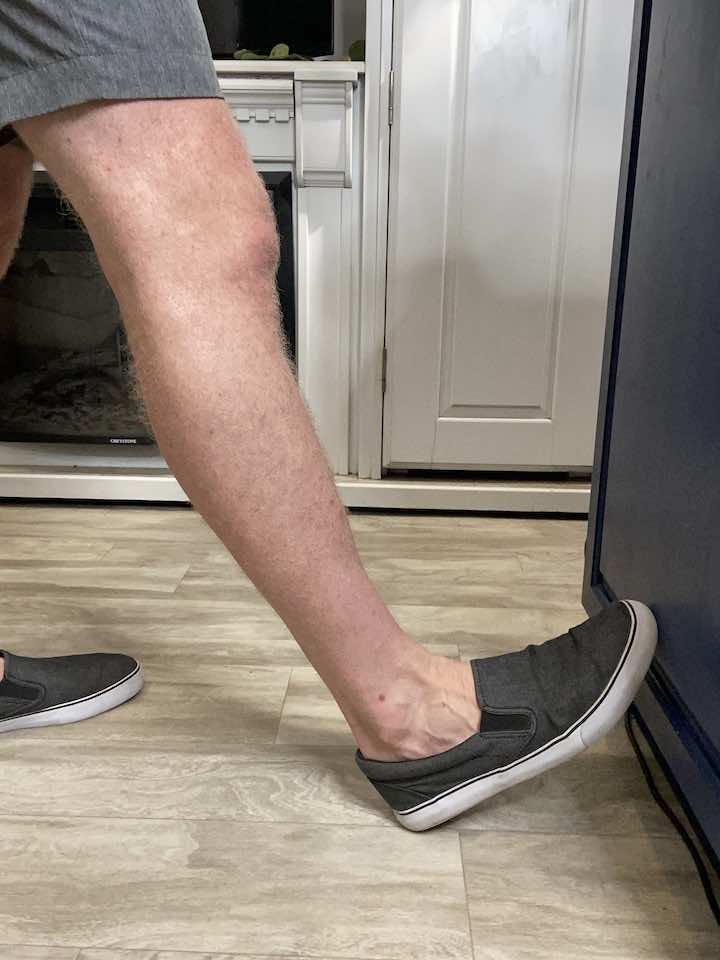
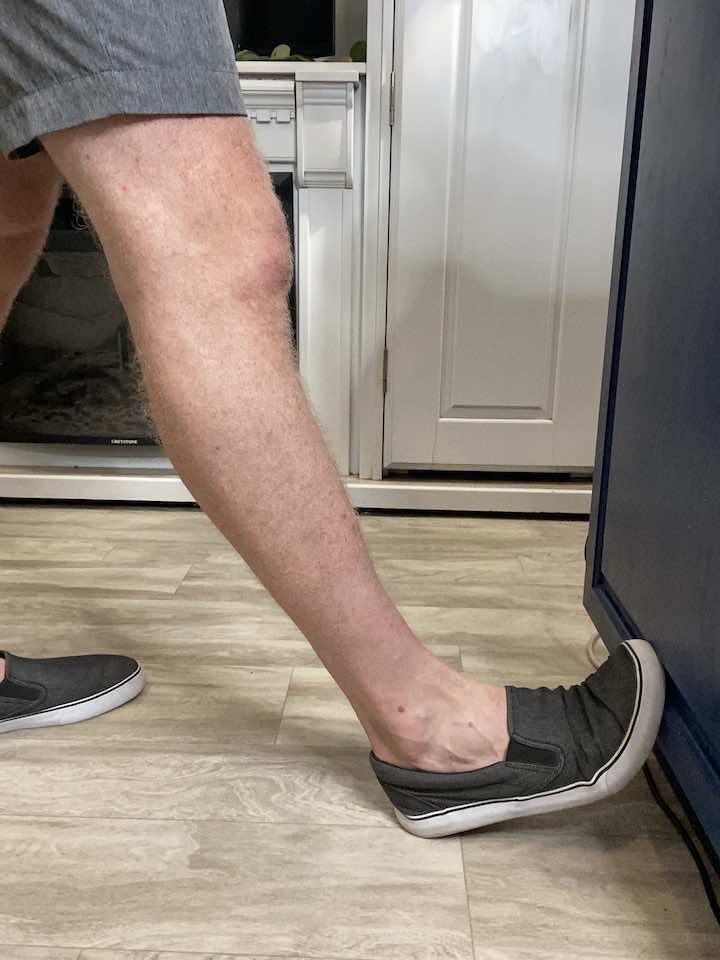
- Begin by lying on your back with both knees bent.
- Cross your left leg over your right, then using both arms gently pull your left knee towards your right shoulder.
- Hold for 30 seconds. Relax and repeat 3 sets on the each leg.
3. Seated Hamstring Stretch
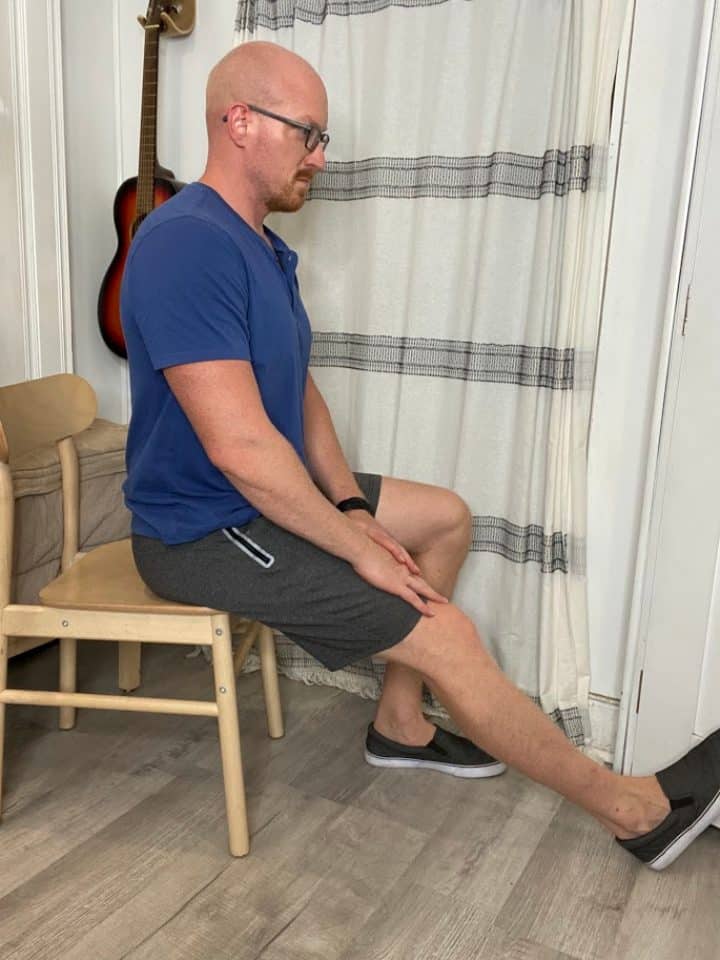
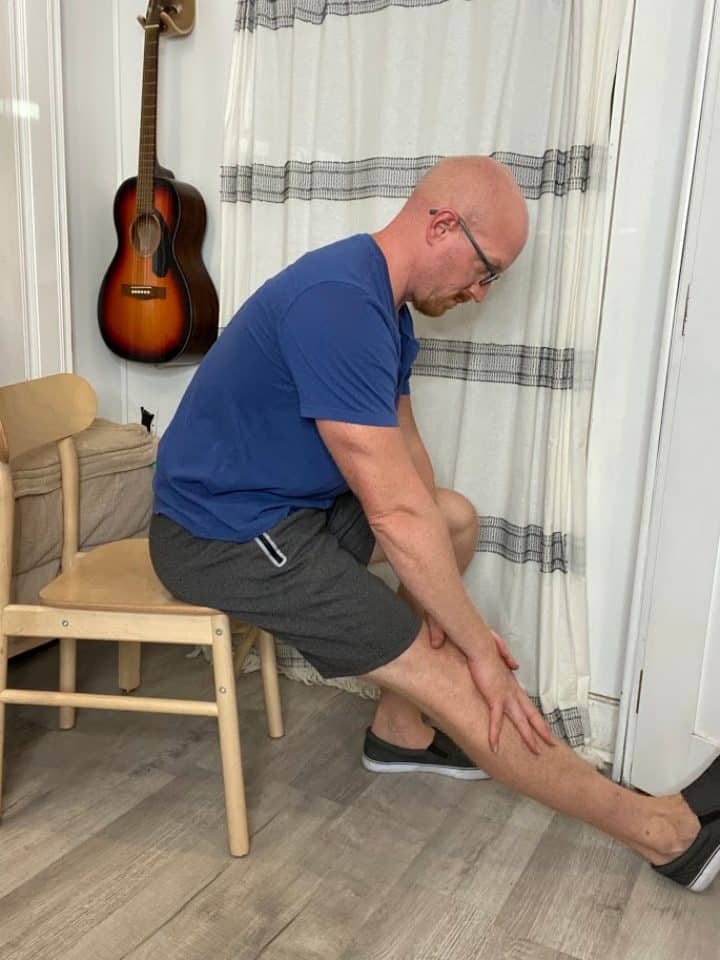
- Seated in a chair, place the leg to be stretched and extended in front of you (the knee should be straight).
- Keeping a straight back, bend forward via hinging at the hips.
- Once you feel a tolerable stretch behind the back of the leg, hold for at least 30 seconds.
- Repeat for 3 sets in total.
4. Lower Trunk Rotation Stretch
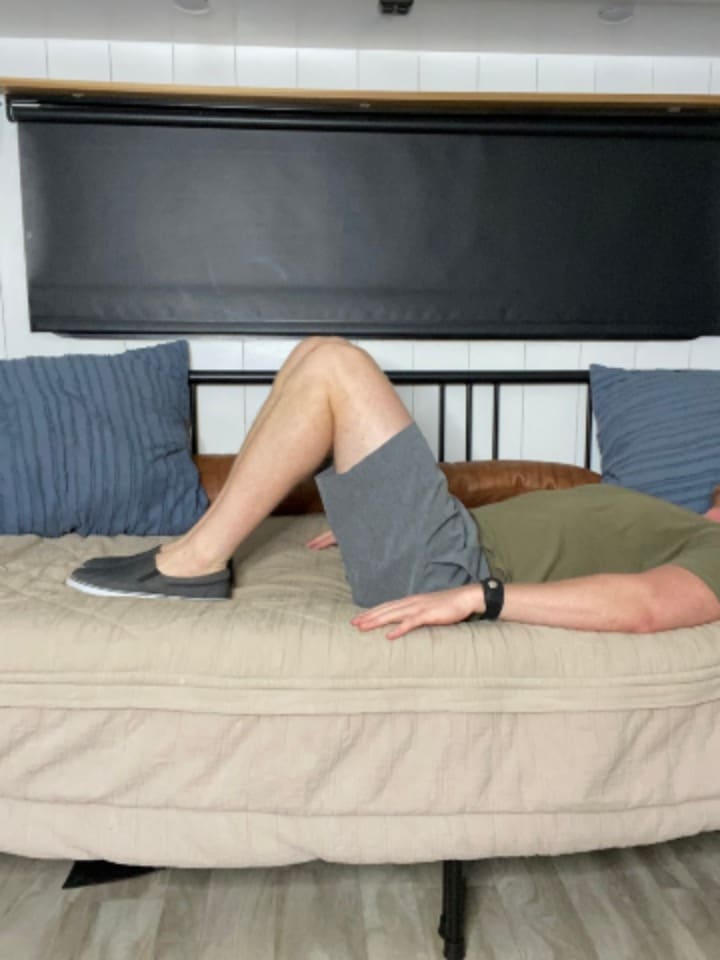
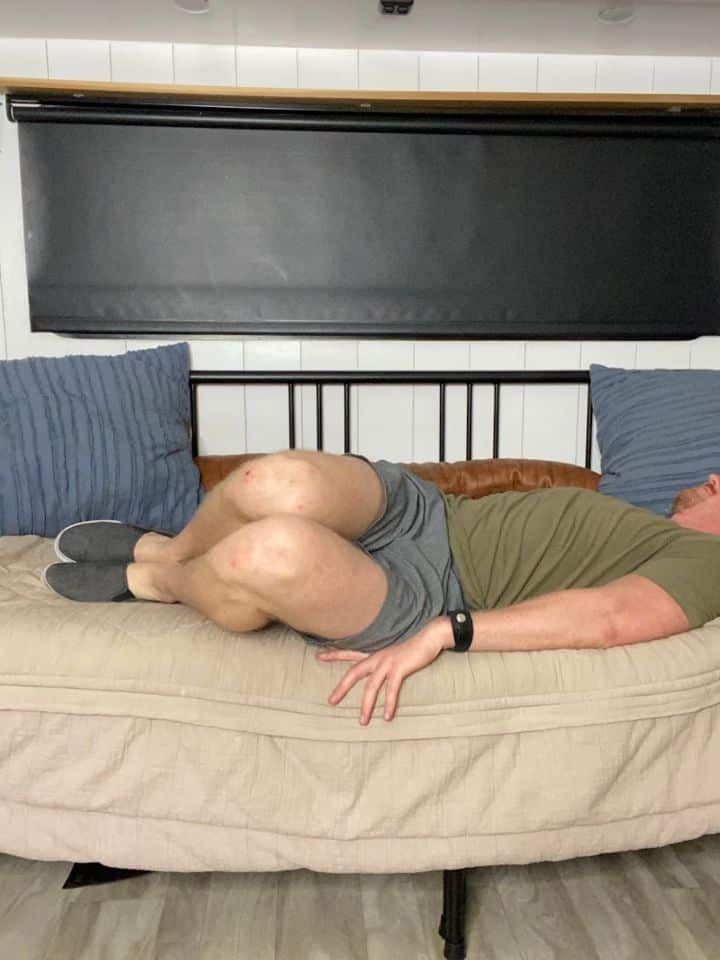
- Lying on your back, have the knees bent and feet flat on the surface.
- Keep the thighs and feet touching together.
- Brace the core by gently pressing the belly button down towards the surface to flatten the back.
- Slowly allow both knees to fall towards one side of the surface. Only move the legs as far as you can without any back pain.
- Hold for 5 seconds, then return to your starting position.
- Repeat in the opposite direction.
- Continue alternating back and forth in this stretch for 10 repetitions each side.
5. Seated Cat/Cow Stretch
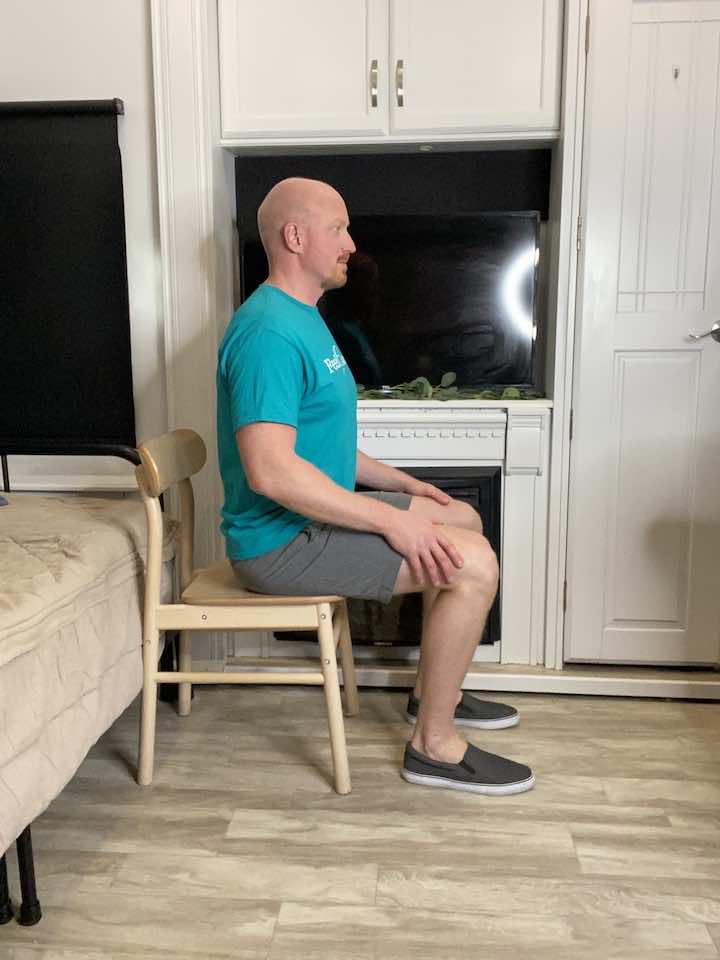
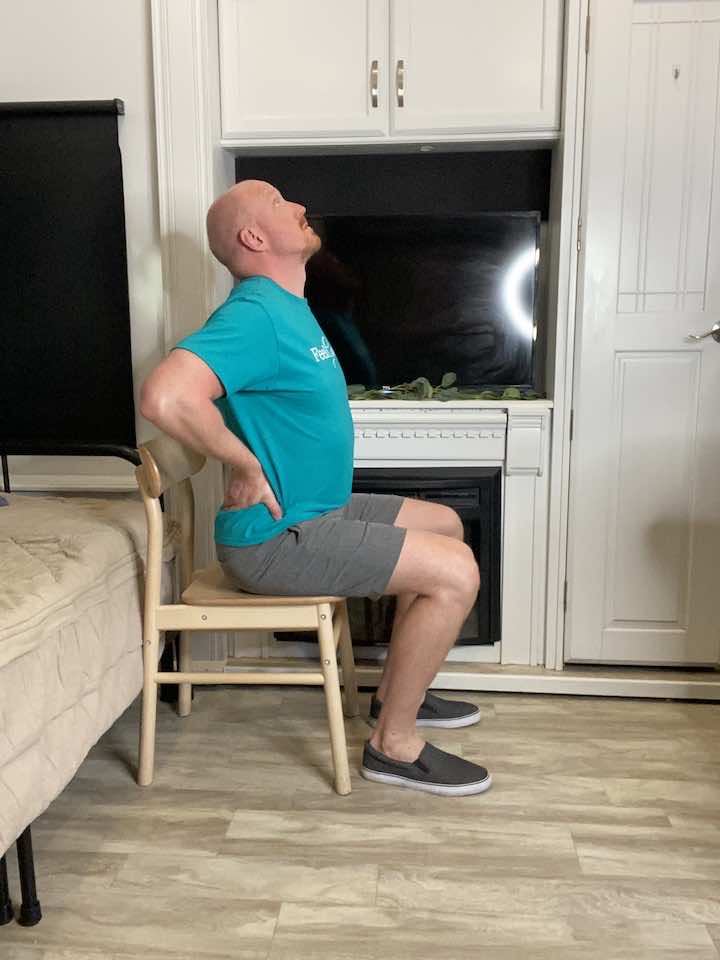
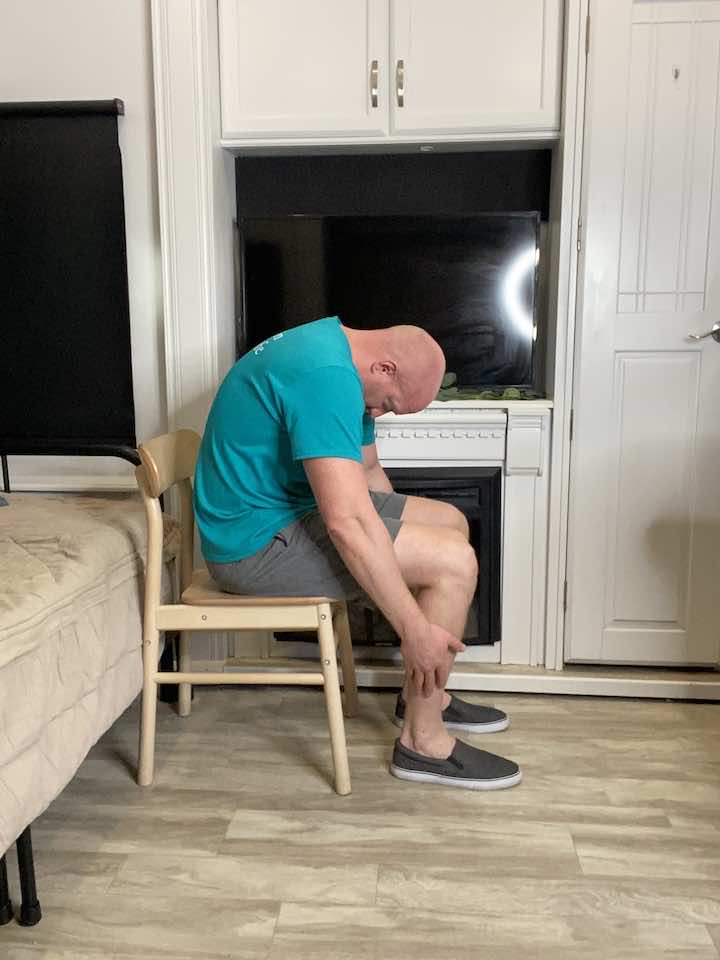
- Sit on the edge of your chair and place your hands on your knees.
- Take a deep inhale and expand your belly, sides, and back similar to the pelvic tilts.
- Upon exhaling, round your spine, sliding your hands down your knees and tucking your chin for greater depth. Go as far as comfortable (or until your exhale is complete).
- Inhale and return past the neutral position and into a slight back arch.
- Repeat these two movements 5 times moving with your breath.
Each of these stretches targets different areas of the back and surrounding muscles, promoting relaxation and flexibility. Consistent practice can lead to significant improvements in managing back spasms.
Core Strength: Key to Alleviating Back Spasms
Once pain levels decrease, focusing on core strength becomes essential. Strengthening the core muscles supports the lower back, reducing the frequency and intensity of muscle spasms.
1. Abdominal Brace
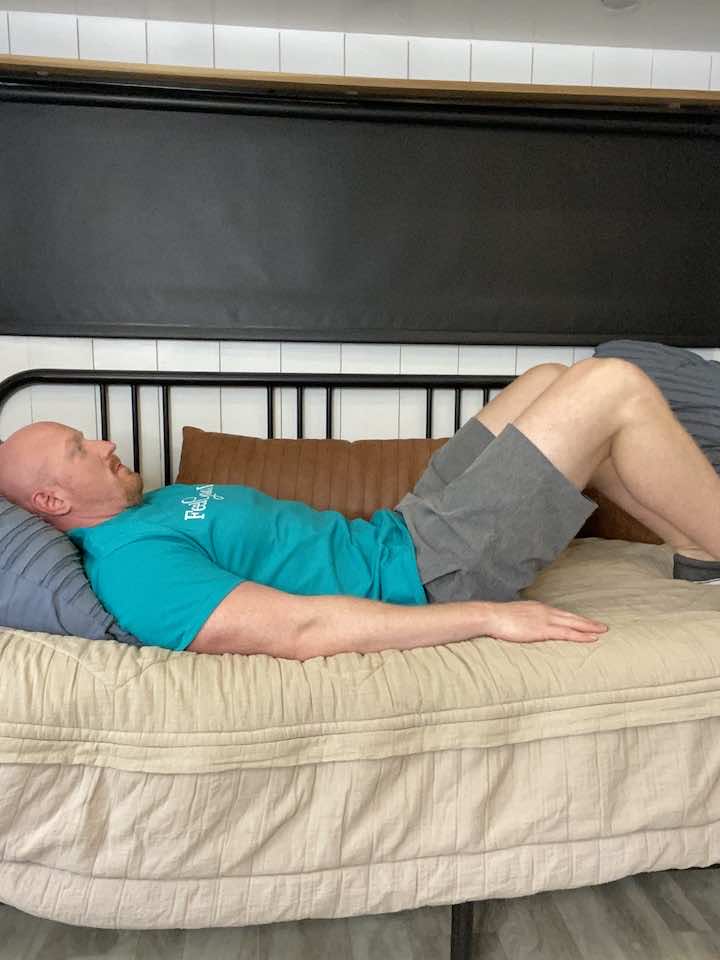
- Begin on your back; knees bent, and feet flat on the floor.
- Exhale and draw your belly button towards your spine (as if a string was pulling on the inside of your belly button from the ground).
- Hold for 5 seconds before relaxing.
- Do this 10 times for one set, and complete 2 sets.
2. Pelvic Tilt
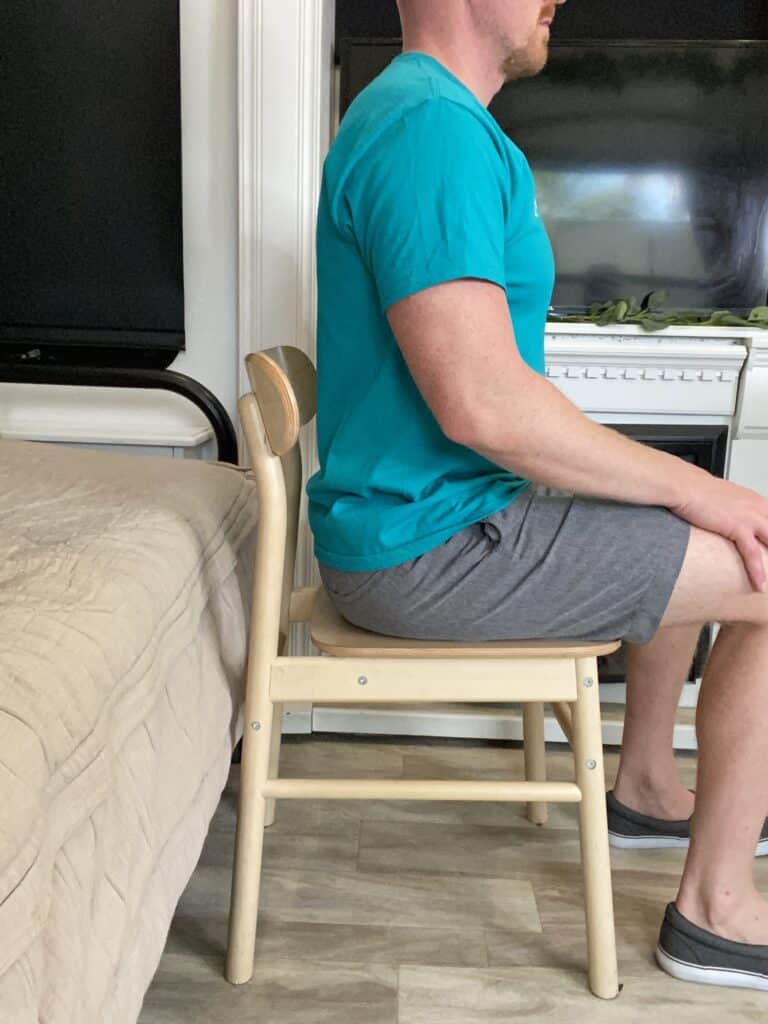
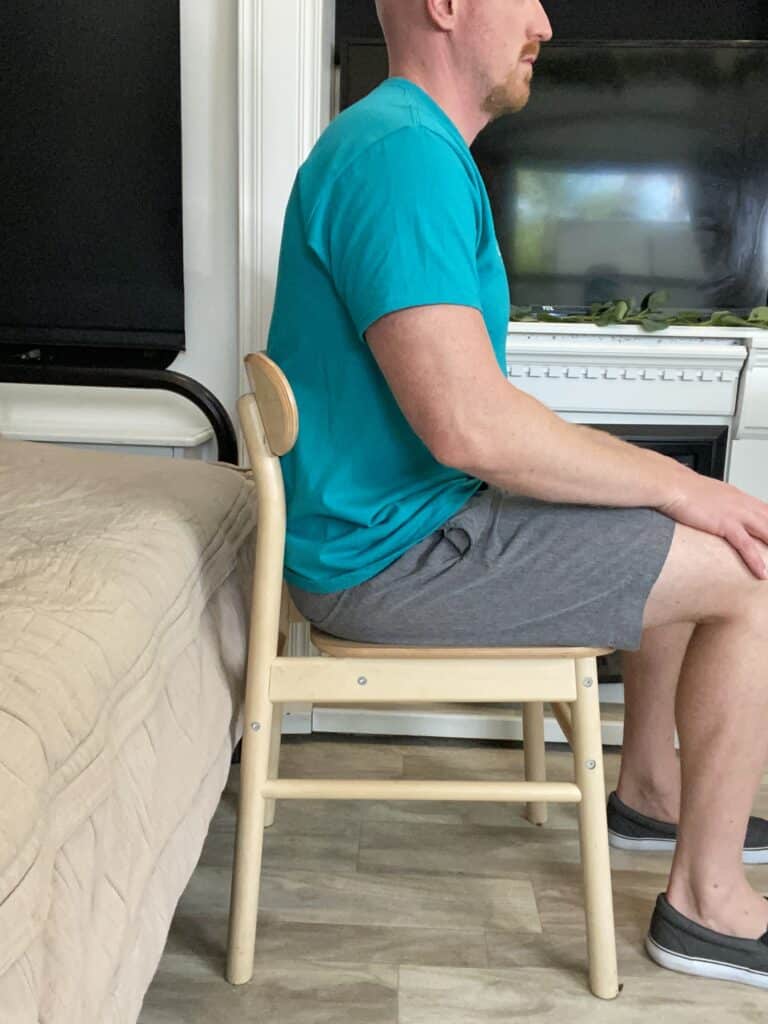
- Sit upright in a chair with your shoulders relaxed. Take a deep inhale and expand your belly.
- As you exhale, contract your abdominal muscles by pulling your belly button in towards your spine and flattening your low back against the chair.
- Hold this position for 5 seconds and then slowly relax.
- Perform 10 repetitions for a total of 3 sets.
3. Supine Marching

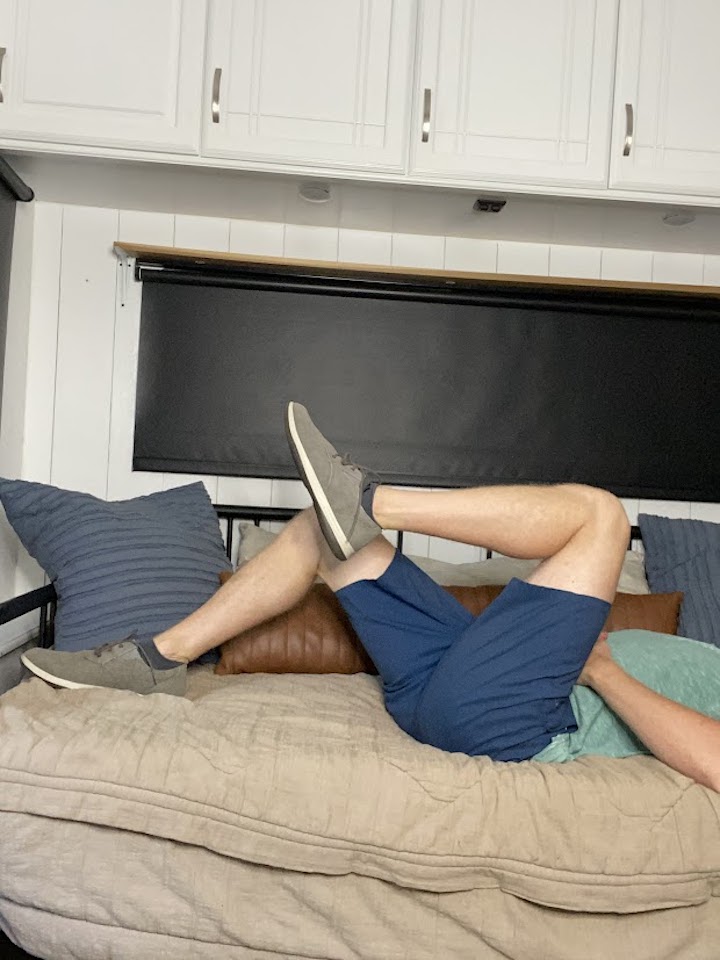
- Starting position: Laying flat on your back (on your bed, couch, or floor), with your knees bent and feet flat on the surface.
- To activate your transverse abdominis, try to pull the belly button down towards the surface, gently flattening the back simultaneously. This will help to brace the core.
- While keeping this braced core (don’t forget to breathe!), lift one knee towards your chest, like a march, then lower back down to the surface.
- Repeat 10 repetitions for 3 sets. Perform on the opposite leg.
- You can perform all repetitions on one side, switch to the other or perform alternatingly between the legs.
4. Bent Knee Fallouts
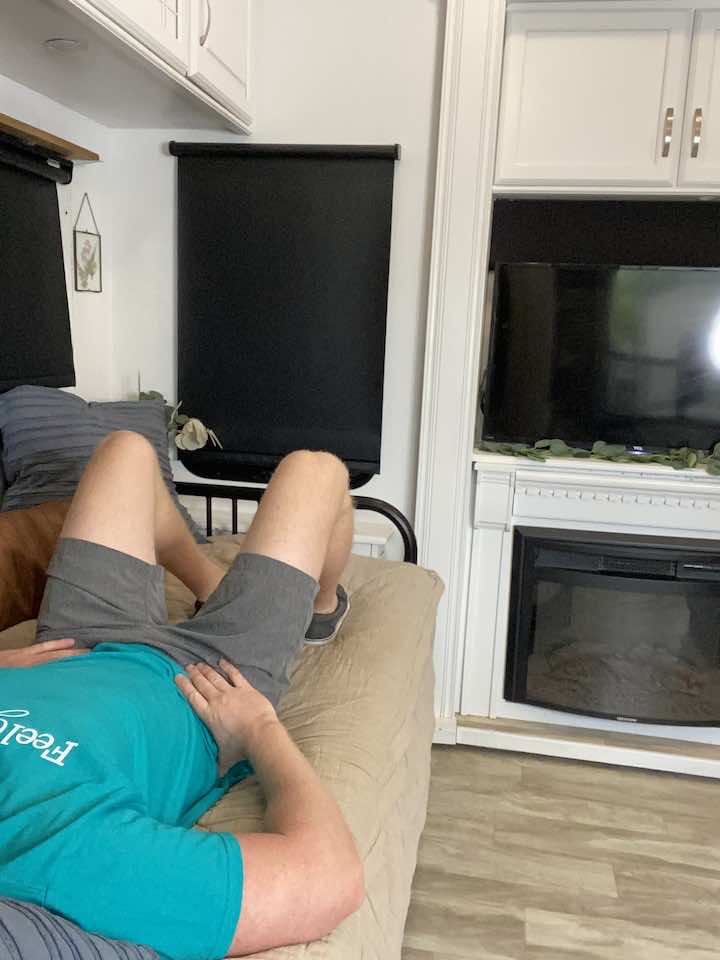
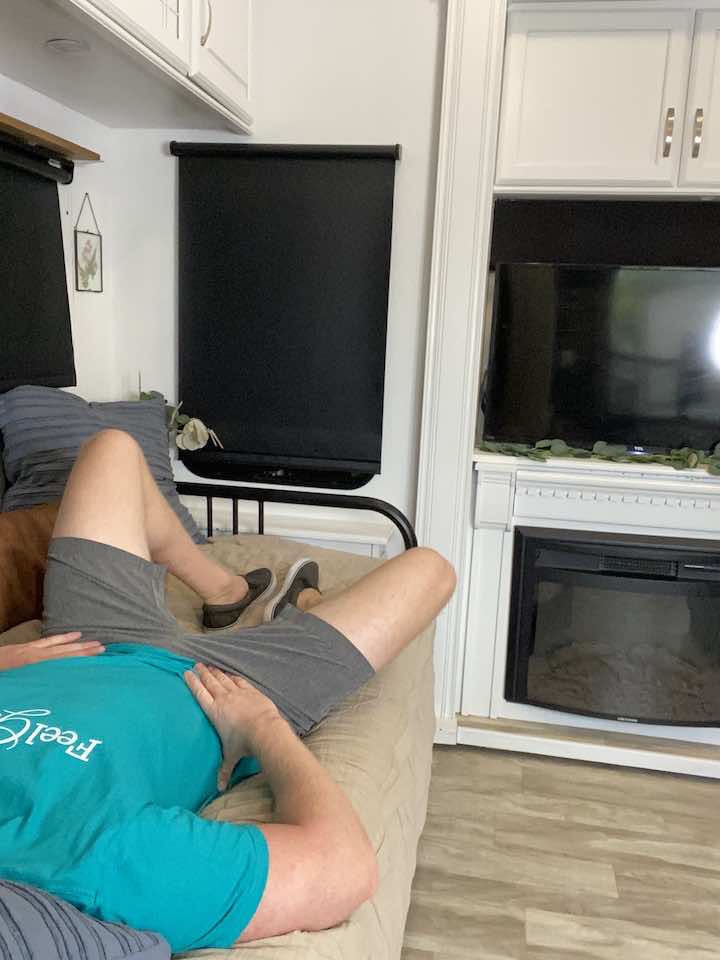
- Lie on your back with both knees bent and your hands on your hips.
- Engage your core by bracing your muscles like a trampoline surface. It’s a subtle movement and shouldn’t feel like you’re pushing your core up or sucking your core in. Just a gentle brace as though someone was about to place a weight on your belly.
- Keep your left knee frozen where it is, then let your right knee lower to the side 45 degrees and come back to the center. Keep your core engaged the whole time. You can monitor for control by using your hands on your hips. If your hip drops to the right side as the right leg moves, you’re not keeping your core engaged. The goal is for your hips to stay perfectly still while you perform this asymmetrical movement.
- Perform sets on the right side, then repeat on the left.
These exercises are designed to fortify the core muscles without putting excessive strain on the back. A stronger core contributes to better posture and back support, significantly managing and preventing back muscle spasms.
Hip Strength: Supporting Your Back
Strengthening your hips is another effective way to support your back. Strong hip muscles can alleviate the burden on the back, further aiding in managing spasms.
1. Bridge
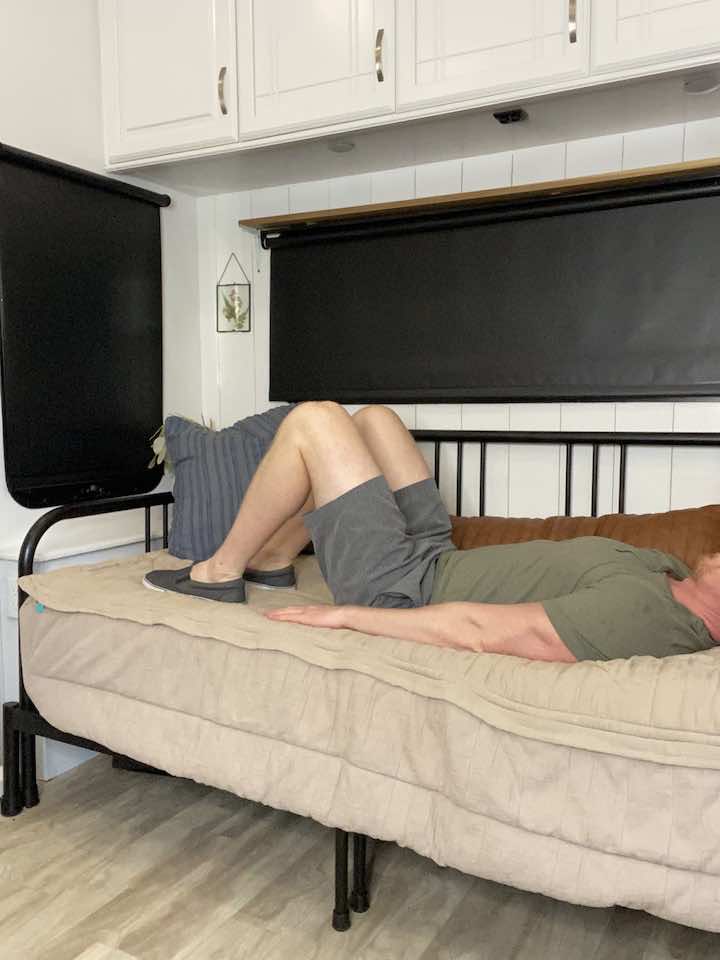
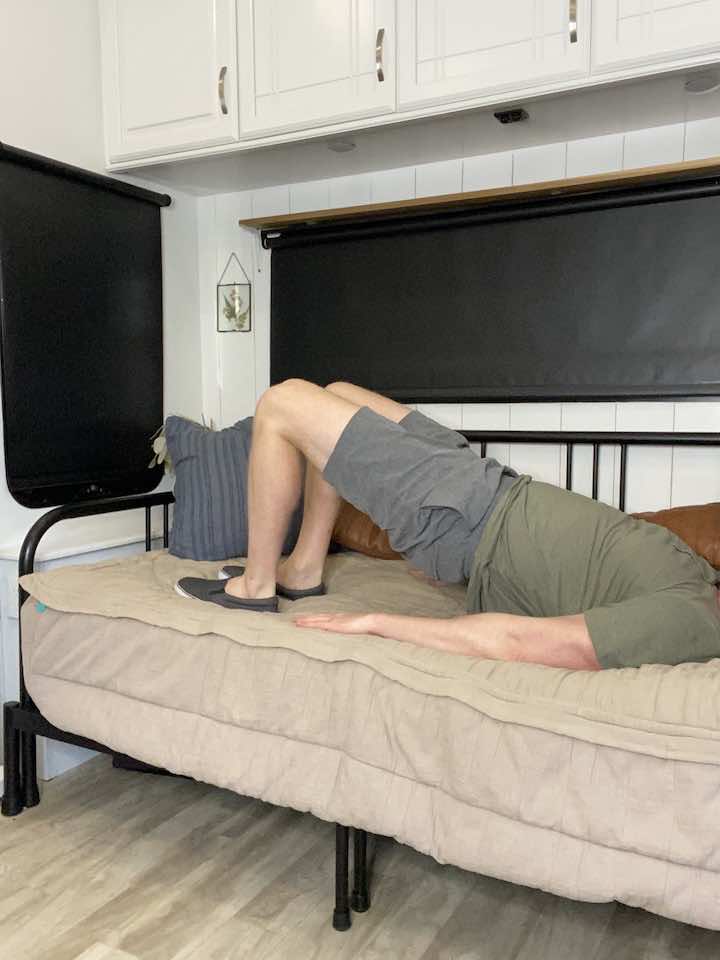
- Lie on the floor or bed with your legs bent and feet flat on the floor/bed.
- Gently squeeze your butt muscles to lift your hips off the ground, feeling a nice stretch in your front thigh and a contraction in the back of your thigh.
- Lower your hips back down to the starting position.
- Repeat 10 times.
2. Clamshells
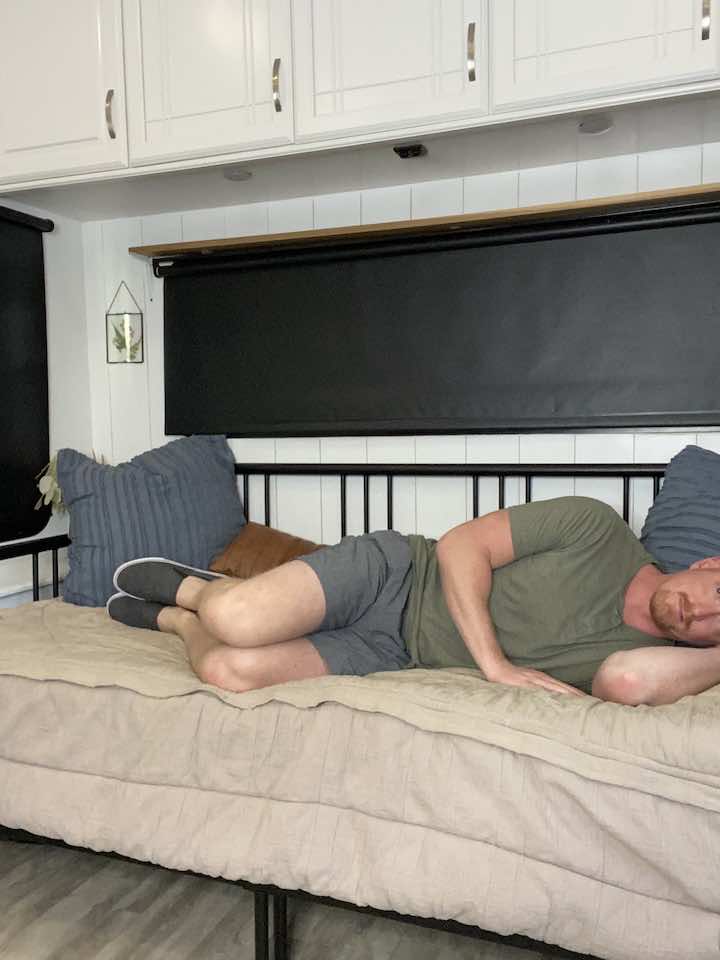
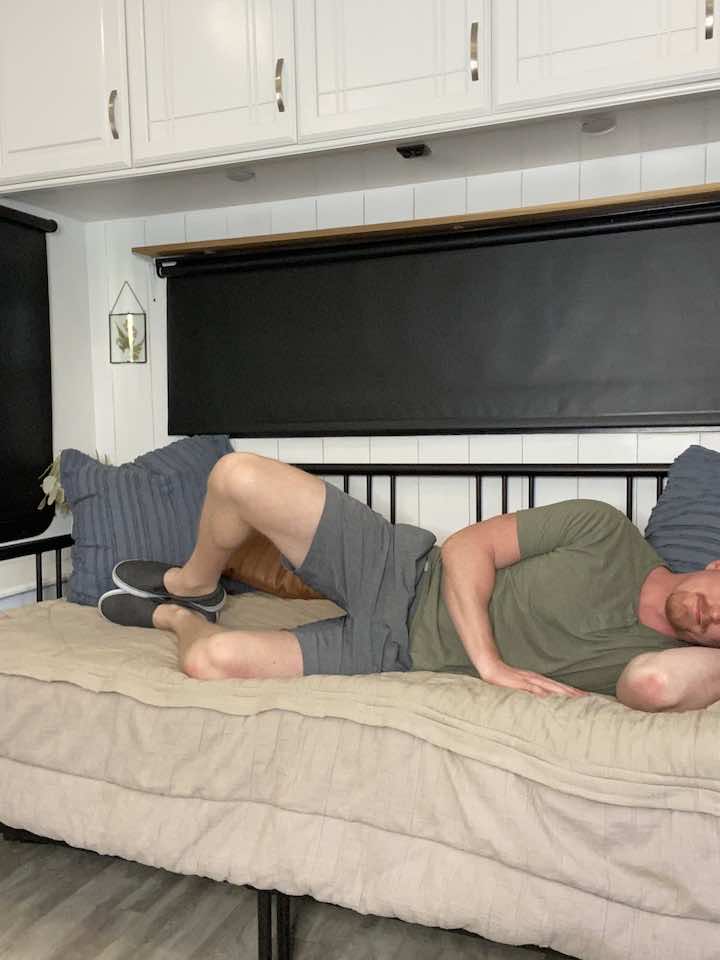
- Start by paying on your side with both knees bent.
- Keep your feet in contact with each other, and then rotate your top leg up.
- Make sure you keep your spine in alignment and your hips don’t rock back! Rule of thumb is to do a smaller range of motion if you think your back is moving.
- Rotate your top leg back down to the starting position.
- Do this 10 times for one set, and complete 3 sets.
3. Standing Hip Lifts


- Stand tall with one hand placed on a bed or chair. Balance on your left leg, keeping a soft bend in your knee to keep from locking out.
- Leading with your heel, lift your right leg out to the side. Be sure not to lean to the left.
- Repeat 10 times per leg.
- Complete 3 sets of the exercise.
4. Standing Hip Extension
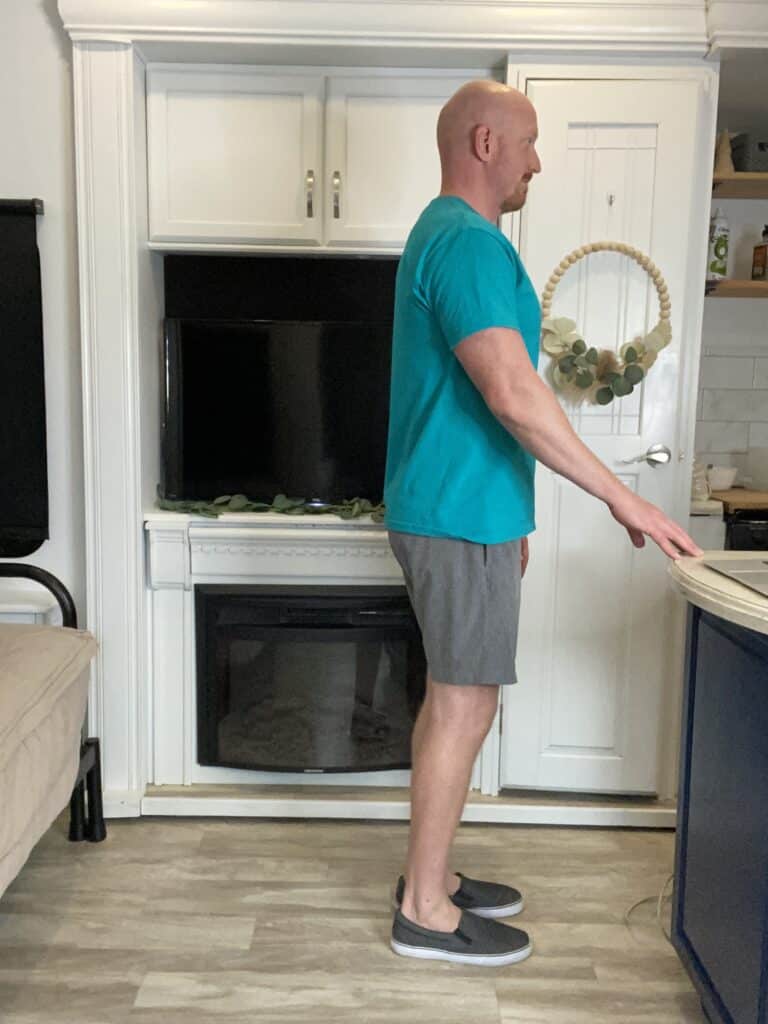
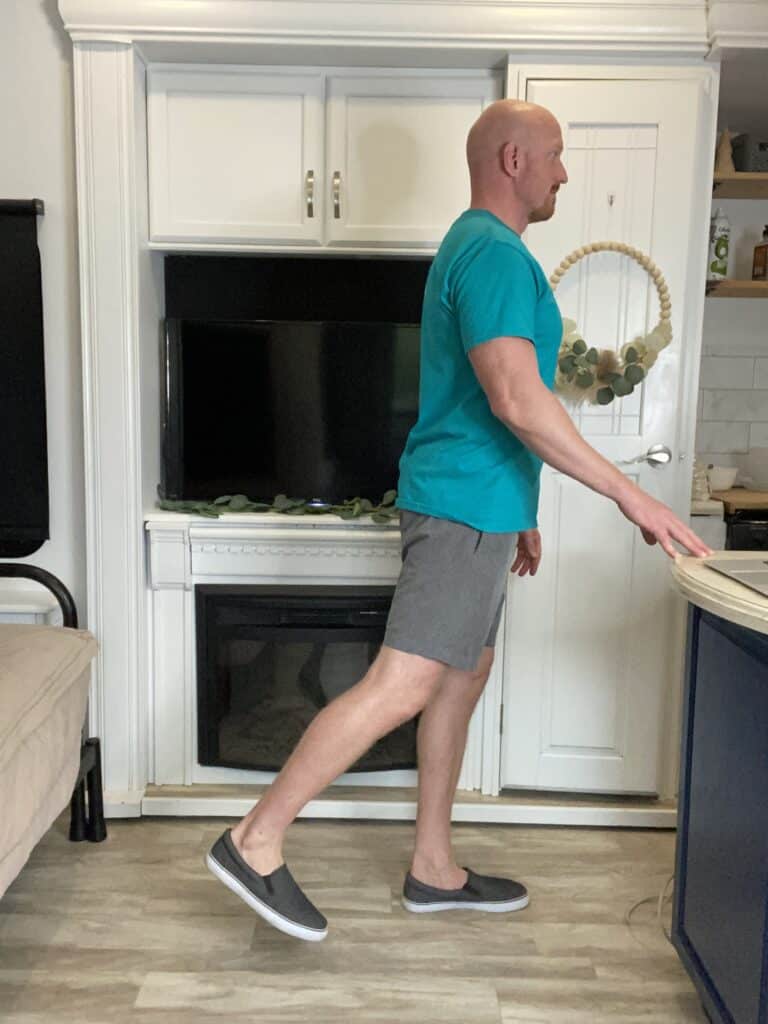
- Stand tall with your hands placed on a steady surface. You can use a counter, sink, or chair (no chairs with wheels) to hold on to for balance.
- Shift your weight onto your left leg, keeping a soft bend in your left knee to keep it from locking out.
- Then, keeping your toes pointed forward and your right leg straight, lift your right leg back a few inches, then lower back down.
- Repeat 10 times per leg for 3 sets.
Focusing on hip strength complements core exercises, providing a well-rounded approach to managing back spasms. Regularly incorporating these exercises can lead to better overall back health and mobility.
Conclusion
Back muscle spasms can significantly impact your quality of life. However, you can effectively manage these spasms through targeted stretching and strengthening exercises. Remember, consistency is key.
Incorporating these exercises into your daily routine can provide significant relief and improve your back health. If you experience persistent back pain or spasms, consult with a healthcare professional for tailored advice and guidance.














